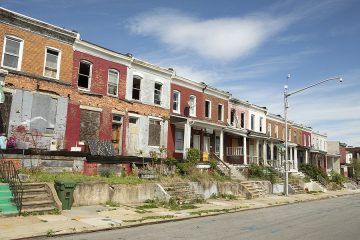Stephanie Hanes in The Christian Science Monitor:
 A Forest Service report published last year found that across the U.S., populated areas lost about 175,000 acres of trees per year between 2009 and 2014, or approximately 36 million trees per year. Forty-five states had a net decline in tree cover in these areas, with 23 of those states experiencing significant decreases. Meanwhile, urban regions showed a particular decline, along with an increase in what the researchers call “impervious surfaces” – in other words, concrete.
A Forest Service report published last year found that across the U.S., populated areas lost about 175,000 acres of trees per year between 2009 and 2014, or approximately 36 million trees per year. Forty-five states had a net decline in tree cover in these areas, with 23 of those states experiencing significant decreases. Meanwhile, urban regions showed a particular decline, along with an increase in what the researchers call “impervious surfaces” – in other words, concrete.
But not, it turns out, in Baltimore. Here, the net tree canopy coverage has increased.
…Trees have been in cities, of course, for centuries. Documents from early New England settlements include rules and regulations about how residents should make use of trees growing on town commons. Many municipalities appointed tree wardens to make sure everyone followed the law. Even the modern concept of urban forestry has been around since the 1960s, when officials in the Johnson administration looked toward nature, and trees in particular, to help revitalize urban landscapes that they perceived to be crumbling. But in recent years, scientists say, demographic trends have shifted attention toward the urban forest in a new way. Across the world, there is a rapid and increasing movement of people from rural areas to cities. In 2009, the United Nations estimated that 3 million people worldwide moved to a city every week. By 2015 more than half of the world’s population lived in urban areas, according to the U.N., with the number of city dwellers expected to grow from 3.9 billion to 6.7 billion by 2050.
More here.
